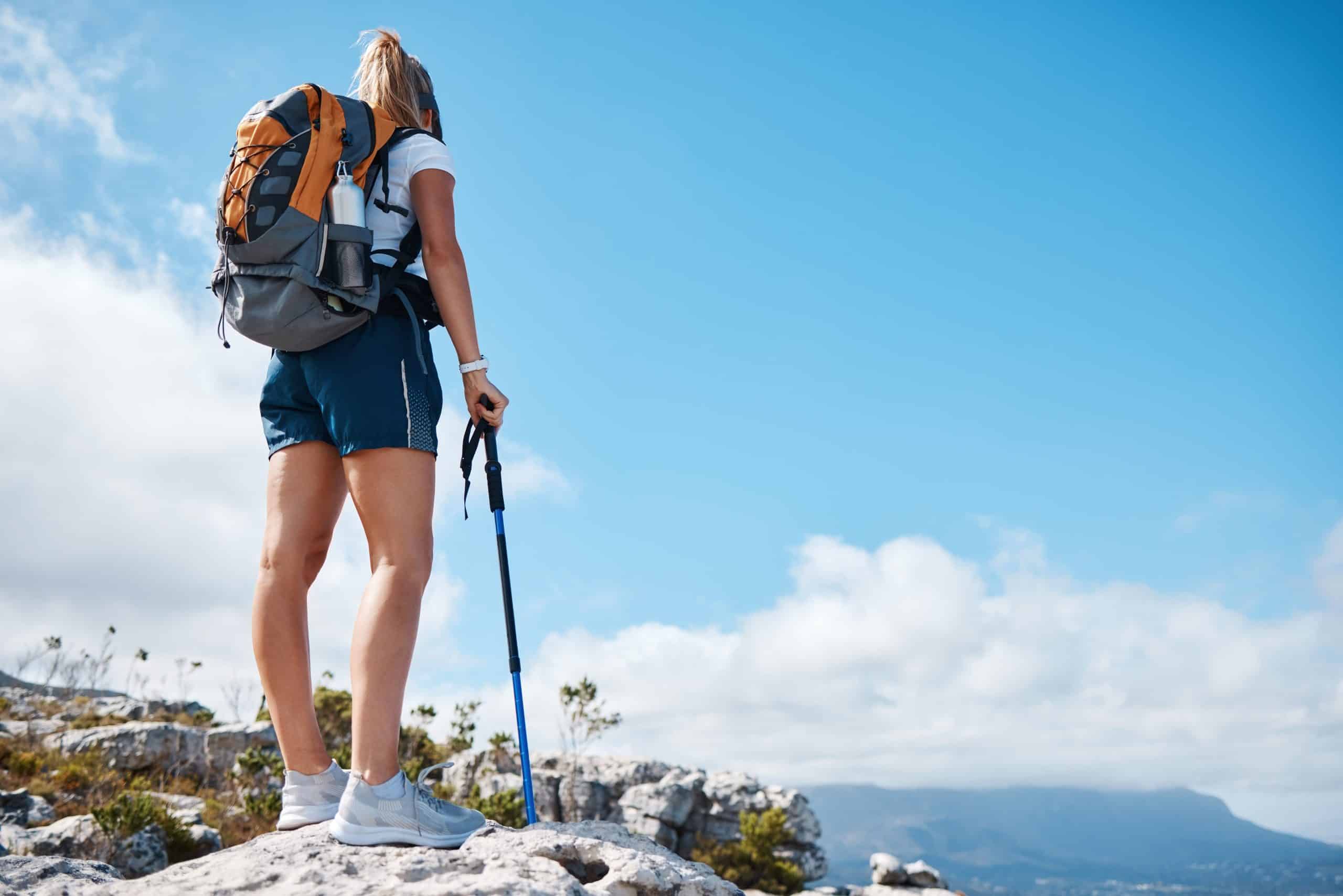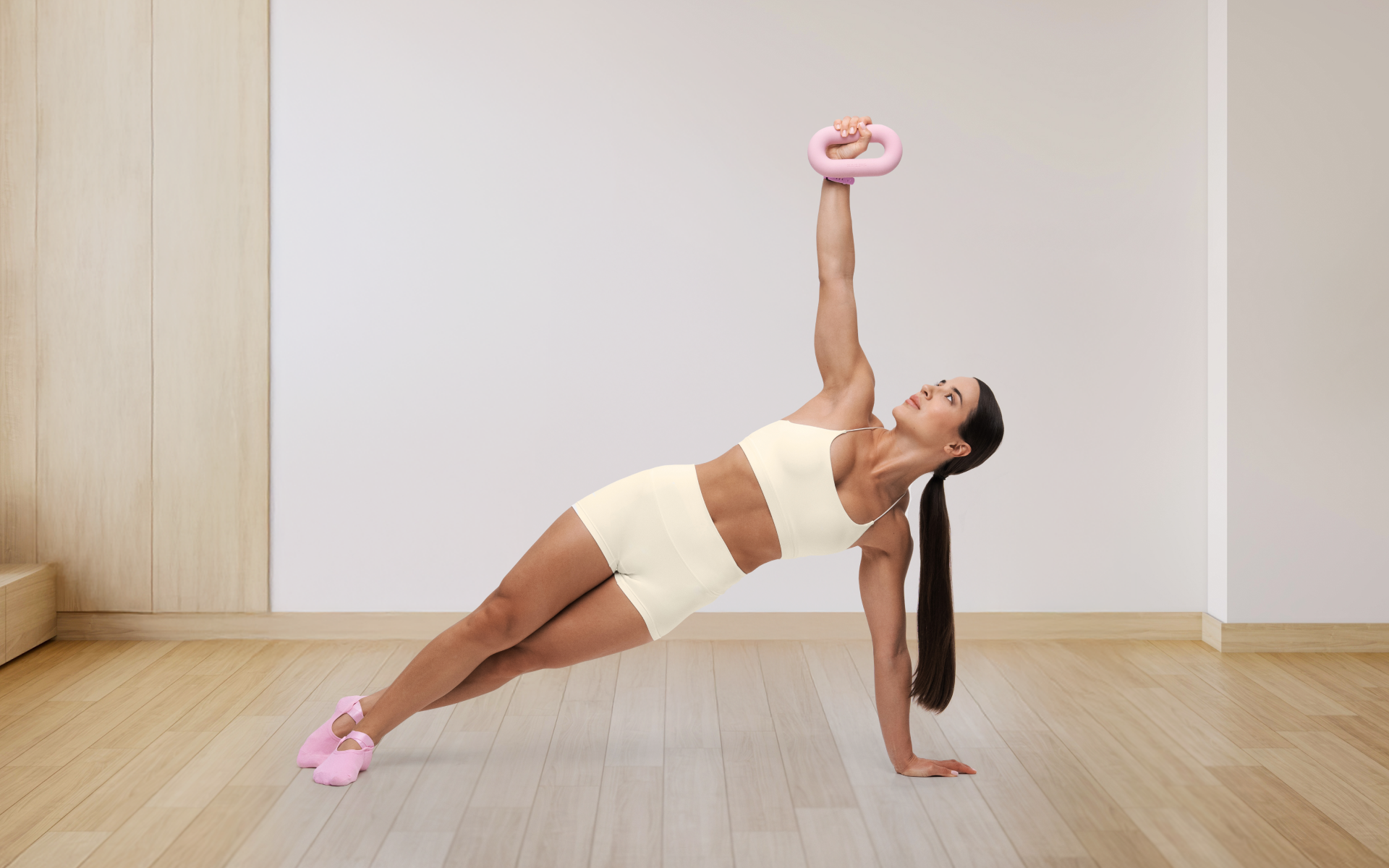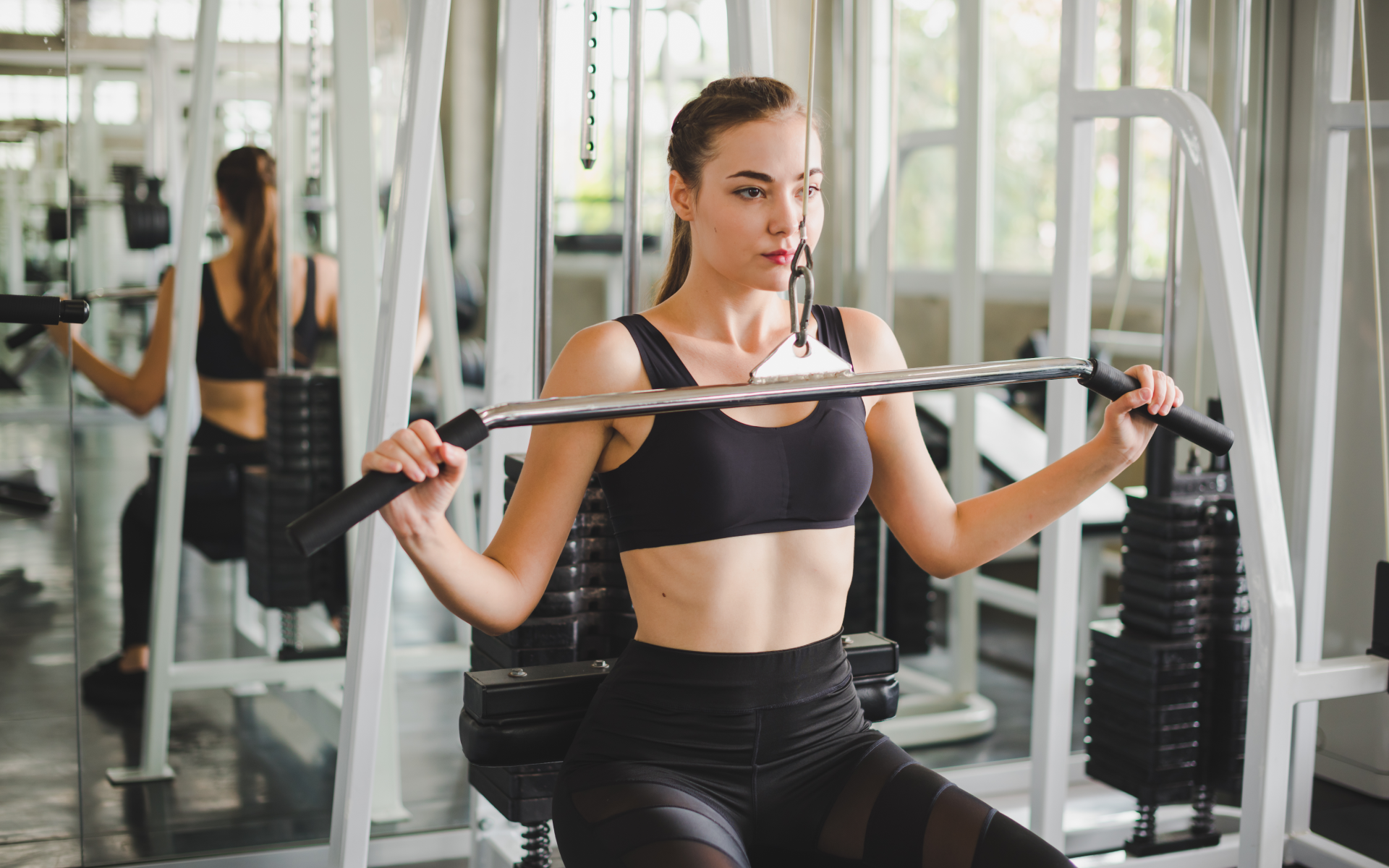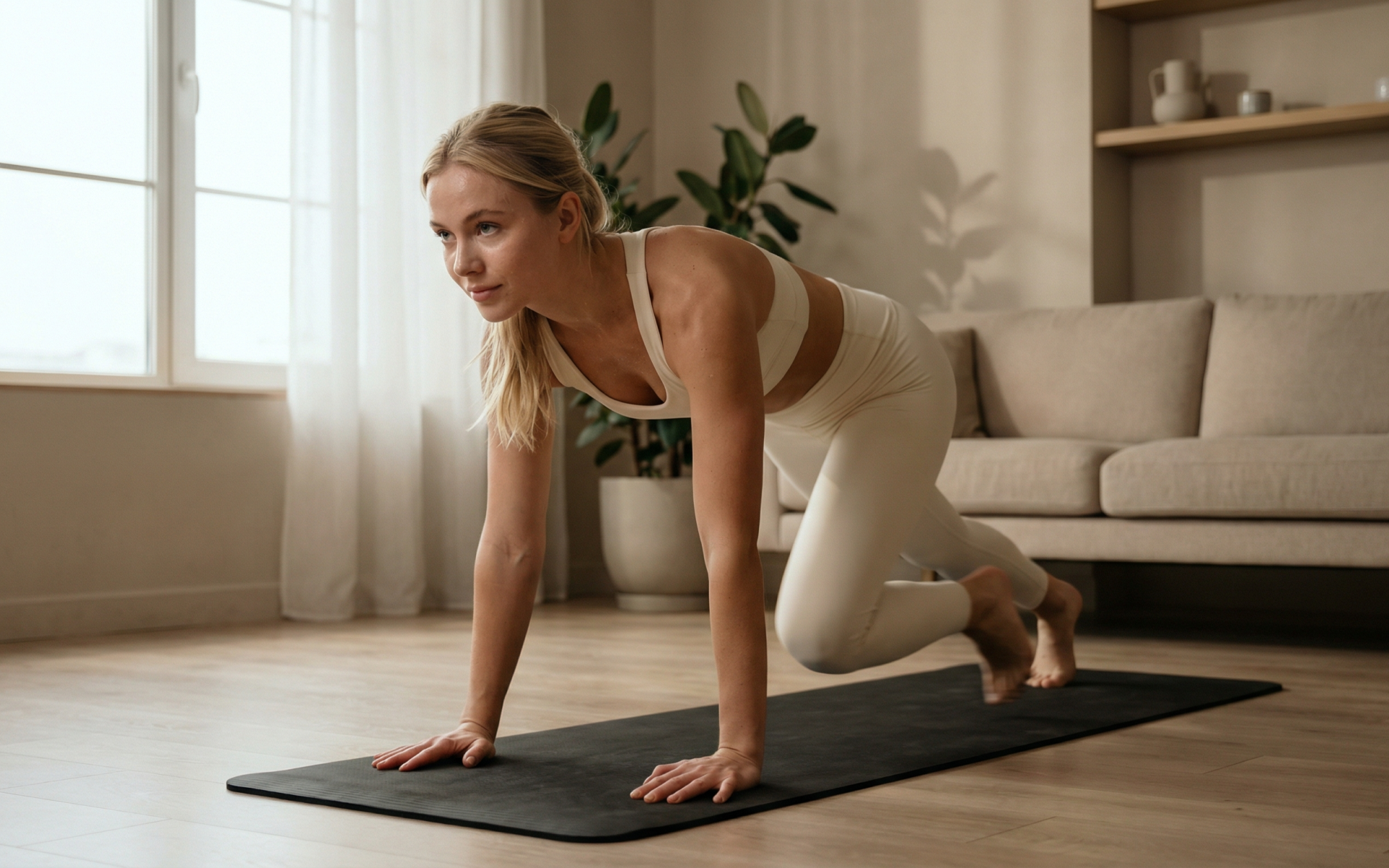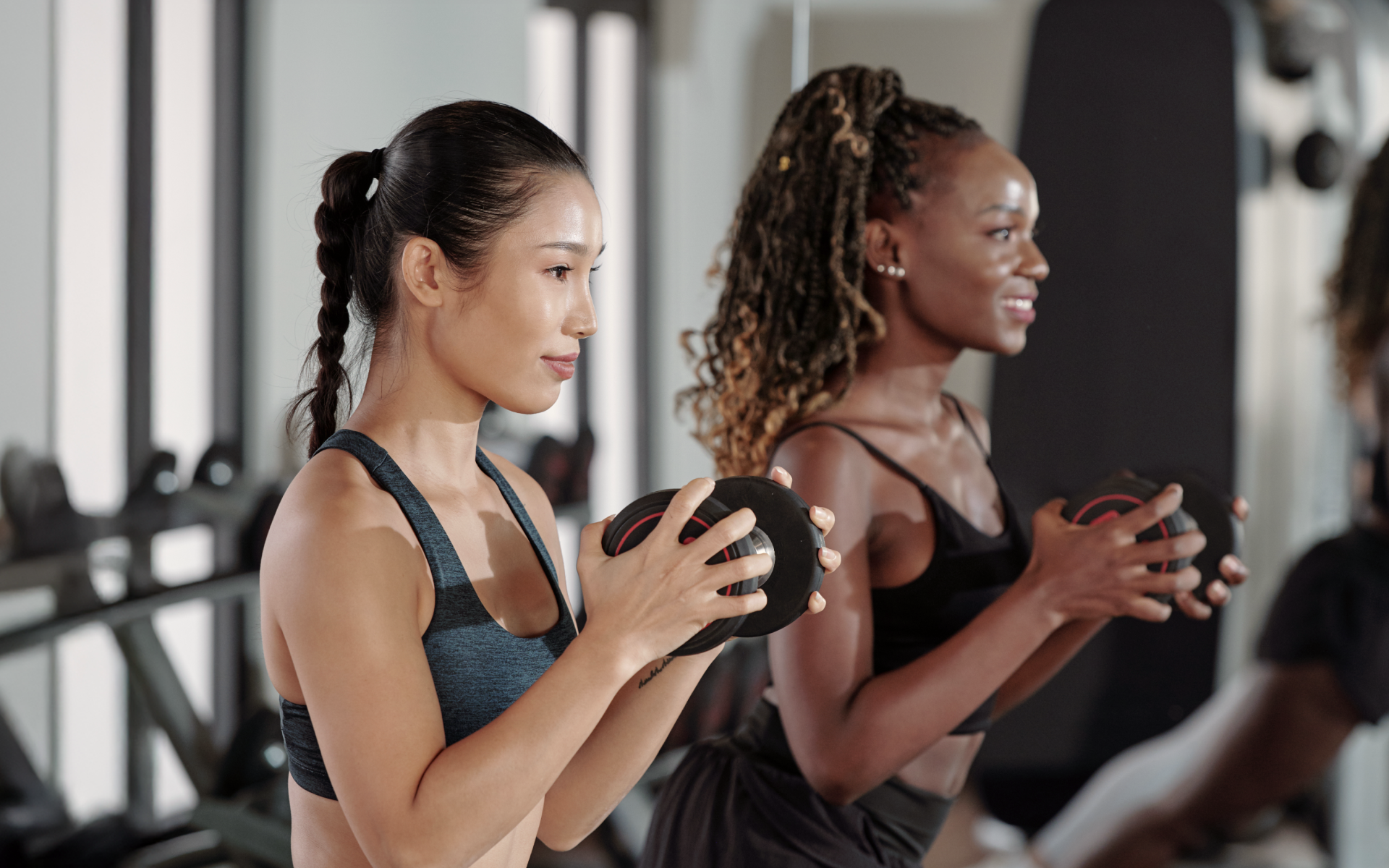Walking is one of the most underrated forms of exercise. It’s not only very accessible and simple to start, but also highly beneficial for our health. Improved mental health, increased cardiovascular fitness, and enhanced muscular endurance are sure gains from a regular walking routine (6).
Rucking takes walking a notch higher by adding weight to your backpack, thus increasing the intensity of the workout. It’s simply walking, but with the added resistance, and it challenges your body in a whole new way.
The best part is that our bodies are capable of adapting to this increased load efficiently, since carrying weight is a fundamental human capability.
Here’s what you need to know about rucking and why it might just be the workout you’ve been looking for.
What Is Rucking?
Rucking is a military-inspired exercise, where participants walk long distances while carrying a weighted backpack. It originated in the military as a way to train soldiers for the carrying of heavy equipment on long marches and missions. Due to its success, it has gained popularity in recent years as a form of low-impact cardio and strength training.
The weight carried during rucking can range from 10 pounds to over 50 pounds, depending on the individual’s fitness level and goals. The most commonly used weight for beginners is around 20-30 pounds.
In order to earn the Expert Infantryman Badge (EIB), US Army soldiers must ruck 12 miles with a 35-pound backpack within three hours. This gives you an idea of the level of intensity and challenge that rucking can provide.
Colonel S.L.A. Marshall, an American author and World War II combat historian, once wrote about rucking: “Rucking is running with a soul.” This statement perfectly captures the essence of what rucking truly is.
How Healthy Is Rucking?
Rucking can single-handedly provide a full-body workout with numerous health benefits, both physical and mental. Here are some of the ways rucking can improve your overall well-being:
Physical Benefits:
Improves Cardiovascular Endurance
Rucking is an excellent form of cardio exercise that requires walking long distances while carrying weight. This helps to strengthen your heart and lungs, leading to improved cardiovascular endurance (4).
Builds Muscle Strength
Rucking puts a significant load on your muscles, especially in your legs, core, and back. This resistance training can help build muscle mass and strength over time (7).
Burns Calories
Walking while carrying weight increases the intensity of the exercise, leading to a higher calorie burn. Depending on your weight and the distance you cover, rucking can burn up to 500 calories per hour. Rucking can potentially help with losing weight and maintaining a healthy body composition (7).
Lowers Risk of Injury
Unlike other high-impact activities like running or weightlifting, rucking is low impact and puts less stress on your joints (7). It’s a safer option for those with preexisting joint issues or injuries.
Improves Posture and Balance
Carrying weight on your back requires proper posture and balance. Over time, rucking can improve your overall posture and balance, leading to better body mechanics (4).
Increases Bone Density
Rucking is a weight-bearing exercise, which means it puts pressure on your bones and muscles. This can lead to increased bone density, ultimately improving overall bone health (7).
Enhances Cognitive Function
Physical activity has been linked to improved cognitive function, and rucking is no exception. Studies have shown that walking can enhance creativity, problem-solving skills, and overall brain function (3).
BetterMe App helps you achieve your body goals with ease and efficiency by helping to choose proper meal plans and effective workouts. Start using our app and you will see good results in a short time.
Mental Benefits:
Reduces Stress and Anxiety
Any form of physical activity, including rucking, can help reduce stress levels and anxiety. The release of endorphins during exercise, combined with the fresh air and nature, can have a calming effect on our minds (10).
Boosts Mood
Exercise releases endorphins, which are natural feel-good chemicals in our brains. Rucking regularly can improve mood, decrease symptoms of depression, and increase overall happiness (10).
Improves Mental Toughness
Rucking can be a mentally challenging exercise, especially when carrying heavier weights or walking long distances. It can help develop mental toughness and resilience over time.
Social Benefits:
Promotes Teamwork
Rucking can be a group activity, which allows individuals to work together and support each other. This promotes teamwork, communication, and bonding with others.
Encourages Community Involvement
Many rucking events or challenges are organized for charity causes, bringing the community together for a common goal, while also promoting physical activity.
Builds Leadership Skills
In the military, rucking is often used as a team-building exercise. It teaches individuals how to effectively lead and support a group, making them better leaders in their personal and professional lives. For the common civilian, rucking can also help develop leadership skills by organizing group walks and events.
Does Rucking Really Build Muscle?
Muscle hypertrophy is one of rucking’s many benefits, and here’s the scientific explanation behind it.
When we carry weight, our muscles are subjected to an external load that they must overcome, leading to micro-tears in the muscle fibers. As these tears heal, the muscle adapts and becomes stronger and larger to handle future loads (8).
Rucking equipment, such as weighted backpacks, can also be adjusted to increase the load gradually. This progressive overload is a key component of muscle growth and strength development (5).
As a form of Active Recovery or Light Training, rucking can also be a great way to facilitate muscle repair and growth after intense weightlifting sessions. It helps increase blood flow and nutrients to the muscles, promoting recovery and growth (4).
Is Rucking As Good As Running?
Rucking may be as good as, or even better than running for certain purposes. The main benefit rucking has over running is providing an intense workout without the heavy impact on your joints that running has.
Here’s a comparison between the two to help you decide which exercise is best for your goals:
Cardiovascular Endurance
Both rucking and running are excellent forms of cardio exercise that can improve cardiovascular endurance. They require continuous movement for an extended period, causing your heart and lungs to work harder (4).
Muscle Development
Both exercises engage various muscle groups in the body, but rucking engages more muscles in both the upper and lower body, due to the added weight over the shoulders.
Running engages primarily leg muscles; hamstrings, quads, glutes, and calves.
Rucking engages these muscles; calves, quadriceps, hamstrings, glutes, abdominals (core), erector spinae (lower back), trapezius (upper back). The added weight also requires the use of arm muscles to stabilize and balance the load (7).
Calorie Burn
Both exercises can burn a significant number of calories, but rucking can potentially burn more due to the added weight (4). However, the number of calories burned depends on factors like body weight and intensity level.
Impact on Joints
Rucking is considered low-impact exercise, compared to running, which can put high levels of stress on your joints.This makes rucking a safer option for individuals with joint issues or injuries (7).
Mental Benefits
Both rucking and running have similar mental benefits, such as reducing stress and improving mood (10).
Read more: Thigh Workout Guide: 7 Effective Exercises for Building Leg Strength
How Much Weight Is Considered Rucking?
Any weight that is carried on your back while walking can be considered rucking, the upper limit being 1/3 of your body weight.
In The Soldier’s Load and the Mobility of a Nation, the U.S. Army concluded that a soldier’s ideal load should not exceed 1/3 of their body weight, to maintain optimal mobility and reduce fatigue.
However, it is important to start with a lighter weight and gradually increase the load as your fitness level improves. It’s recommended to start with 10% of your body weight and increase by 5-10% every few weeks.
How To Get Started With Rucking?
Here’s a guide to rucking for beginners:
Get Your Rucking Equipment
Start with what you have – that can be a well-fitted backpack and water bottles or sandbags as weights. As you progress, invest in a good quality, durable rucksack/backpack with weighted plates that are designed for rucking.
While choosing a backpack, make sure it has comfortable straps, a waist belt and chest strap for added support, and multiple pockets to distribute the weight evenly.
Other equipment you may need for your comfort and safety include:
- Performance socks – to prevent blisters
- Moisture-wicking clothing – to stay dry and comfortable
- Good quality walking shoes/boots – for better support and comfort on different terrains
- Reflective gear/ headlamp – for night rucks
- GPS watch/fitness tracker – to track your distance, pace, and calorie burn
Find Your Starting Weight
As mentioned earlier, start with 10% of your body weight and gradually increase the load as you build strength and endurance. Make sure the weight is evenly distributed in your backpack to avoid discomfort or injury.
Choose Your Route
Start with a shorter route, preferably on flat terrain, and gradually increase the distance and introduce different terrain challenges as you progress.
Trails with inclines can provide extra resistance and make your rucking more challenging.
Maintain Proper Form
Keep your back straight, head up, and engage your core muscles to maintain good posture. Swing your arms naturally while marching forward, and take short strides at a comfortable pace.
Avoid leaning too far forward or backward as it can cause strain on your joints and back muscles.
Start Slow And Build Progressively
Don’t push yourself too hard in the beginning. Start slow and focus on maintaining proper form, breathing, and enjoying your surroundings. As you progress, increase the distance and intensity gradually.
Rucking twice a week is a good starting point, and you can increase the frequency as your body adapts to the stress.
If you wish to free yourself from all the extra pounds that have been weighting you down for way too long, start using the BetterMe app and overhaul your entire life!
How To Prepare Your Body for Rucking?
Rucking can be a demanding activity, especially for beginners. Here are some ways to prepare your body:
Strengthen Your Core Muscles
A strong core is essential for carrying heavy loads and maintaining good posture during rucking. It also helps prevent injuries and improve balance (9).
Many compound exercises such as squats, deadlifts, and planks can help strengthen not only your core muscles, but your leg muscles preparing them for rucking.
Here are 4 ideal exercises to strengthen your core for rucking:
Weighted Planks
Planks are a simple and effective core exercise, but adding extra weight can significantly increase the challenge. To perform a weighted plank:
- Start with a standard plank position – hands under the shoulders, toes on the floor.
- Place a weighted plate on your back, or wear a weighted vest.
- Hold the plank position for 30-60 seconds while keeping your core engaged.
- Repeat for 3 sets, gradually increasing the duration and weight as you progress.
Russian Twists
Russian twists target your obliques, which are crucial for maintaining stability during rucking. To perform a Russian twist:
- Sit on the ground with your knees bent and feet flat.
- Holding a weighted object (dumbbell, kettlebell, or medicine ball) in front of your chest.
- Lean back slightly and twist your torso to one side, bringing the weight to touch the ground beside you.
- Return to the starting position and repeat on the other side.
- Perform 10-12 reps for 3 sets.
Pallof Press
Pallof press strengthens your core and also works on your arms and shoulders, making it an ideal exercise for rucking. To perform a Pallof press:
- Stand with your feet shoulder-width apart.
- Hold a resistance band or cable handle in front of you at chest level.
- Keep your elbows close to your body and fully extend your arms in front of you.
- Slowly bring your arms back to the starting position while resisting the pull of the band or cable.
- Perform 8-12 reps per side for 3 sets.
Farmers Carry
This exercise mimics the movement and load distribution of rucking, making it an ideal choice for training. To perform a farmers carry:
- Hold a heavy weight in each hand (dumbbell, kettlebell, or weighted plates).
- Keep your shoulders down and back, engage your core, and walk forward for a set distance.
- Turn around and repeat in the opposite direction.
- Start with 30 seconds and gradually increase the duration as you progress.
Strengthen Your Leg Muscles
Strong leg muscles are essential for supporting your body and carrying heavy loads during rucking. Here are some exercises to strengthen your legs:
Squats
Squats work on multiple muscle groups in your lower body, including glutes, quads, hamstrings, and calves. There are many variations, depending on your fitness level, but here’s a simple bodyweight squat:
- Stand with feet shoulder-width apart.
- Lower yourself down by sitting back and bending at the knees as if sitting on an invisible chair.
- Make sure to keep your back in a neutral position and to lower until your thighs are parallel to the floor or lower.
- Push through your heels and return to the standing position.
- Perform 10-12 reps for 3 sets.
Lunges
Lunges target your glutes, quads, hamstrings, and calves. To perform a lunge:
- Stand with feet shoulder-width apart.
- Take a big step forward with one leg and lower yourself until both knees are bent at a 90-degree angle.
- Make sure your front knee is directly above your ankle, and your back knee is close to the ground.
- Push through your front foot and return to the starting position.
- Repeat on the other leg. Perform 16-20 reps for 3 sets.
Step-Ups
Step-ups are a great exercise to mimic the movement of climbing uphill during rucking. To perform a step-up:
- Stand in front of a box, bench, or elevated surface.
- Place your foot on the box and press your foot into the box extending your leg and raising you up.
- Step down carefully and repeat on the other leg.
- Perform 16-20 reps for 3 sets.
Find more leg exercises in our previous blog: Leg Workouts At Home With Weights
Improve Your Grip Strength
If you decide to take your rucking a step further and not only carry weight on your back, but in your hands too, grip strength is the key to your success. Grip strength is crucial for carrying heavy loads during rucking. Here are four exercises to improve your grip strength:
Dead Hangs
Dead hangs involve hanging from a bar or other elevated surface and holding on for as long as possible. This exercise works on your forearm muscles and grip strength. To perform a dead hang:
- Find a sturdy overhead bar or branch.
- Jump up to grab onto the bar with both hands.
- Hang on to the bar for as long as possible (start with 30 seconds and gradually increase the duration).
Farmer’s Carry
This exercise involves holding a heavy weight in each hand and walking for a set distance or time. To perform a farmer’s carry:
- Hold a heavy weight in each hand (dumbbell, kettlebell, or weighted plates).
- Keep your shoulders down and back, engage your core, and walk forward for a set distance.
- Turn around and repeat in the opposite direction.
- Start with 30 seconds and gradually increase the duration as you progress.
Fat Grip Holds
Fat grip holds involve using a thicker bar or adding grip attachments to traditional weights, making it harder to hold on. To perform a fat grip hold:
- Grasp a thick barbell or pull-up bar.
- Hold on for 10-20 seconds, gradually increasing the duration as you progress.
Wrist Curls
Wrist curls target your forearm muscles and help improve grip strength. To perform a wrist curl:
- Sit at the edge of a bench or chair, holding a dumbbell in one hand with your palm facing up.
- Rest your forearm on your thigh, and let your wrist hang over the edge.
- Slowly curl the weight up towards your body, then lower it back down.
- Perform 10-12 reps for 3 sets.
Stretch And Mobilize
Rucking can put extra stress on your muscles and joints, so it’s essential to stretch and mobilize before and after your rucks. Focus on stretching your calves, hamstrings, quads, glutes, and hip flexors to prevent tightness and injury.
Foam rolling is also an excellent way to release muscle tension and improve mobility. Spend 5-10 minutes foam rolling the muscles used in rucking before and after each session.
Below are 4 stretches that target the muscles used in rucking:
Calf Stretch
- Stand facing a wall with your feet hip-width apart.
- Place both hands on the wall at shoulder height and lean forward.
- Keep your back leg straight and heel on the ground while bending your front knee to feel a stretch in your calf muscle.
- Hold for 30 seconds, then switch legs and repeat.
Standing Hamstring Stretch
- Stand with your feet hip-width apart.
- Place one foot on a bench or step in front of you, keeping the leg straight.
- Bend forward at the hips until you feel a stretch in the back of your thigh.
- Hold for 30 seconds, then switch legs and repeat.
Quad Stretch
- Stand with your feet hip-width apart.
- Bend one knee and bring your heel towards your buttocks, holding it with the same hand.
- Hold for 30 seconds, then switch legs and repeat.
Hip Flexor Stretch
- Kneel on one knee with the other foot flat on the ground in front of you.
- Keep your posture upright and lean forward until you feel a stretch in the front of your hip.
- Hold for 30 seconds, then switch legs and repeat.
Read more: Your Flat Tummy Workouts Just Got Better With This Guide
Improve Your Cardiovascular Endurance
Rucking is a high-intensity, endurance-based activity that requires cardiovascular fitness. Here are three ways to improve your cardiovascular endurance for rucking:
Interval Training
Interval training involves alternating between periods of high-intensity and low-intensity exercise, mimicking the stop-and-go nature of rucking. Here’s an example of a simple interval workout:
- Warm up with a 5-minute walk.
- Ruck for 2 minutes at a moderate pace, followed by a 1-minute sprint.
- Repeat this cycle for 20-30 minutes.
Long-Distance Rucking
Rucking for longer distances at a slower pace is an effective way to build cardiovascular endurance. Start with shorter distances and gradually increase the distance as you progress.
Hill Repeats
Incorporating hill repeats into your rucking routine will help build cardiovascular endurance and increase leg strength. Here’s how to perform a hill repeat:
- Find a steep incline and ruck up the hill at a moderate pace.
- Rest for 1 minute at the top, then turn around and ruck back down.
- Repeat this cycle for 20-30 minutes.
Hydrate And Fuel Your Body Properly
Rucking is a physically demanding activity that requires proper hydration and nutrition. Make sure to drink plenty of water before, during, and after your rucks to prevent dehydration.
Also, fuel your body with a balanced diet that includes enough protein, carbohydrates, and healthy fats. These macronutrients are essential for energy production and muscle recovery (2).
FAQs
What Muscles Are Built By Rucking?
Rucking primarily targets the muscles in your calves, hamstrings, quads, glutes, and hip flexors. It also works on your core, back, and shoulders (7).
Can Rucking Replace Strength Training?
Rucking shouldn’t replace strength training, but it can be a great addition to your workout routine. Rucking primarily builds muscular endurance and cardiovascular fitness, while strength training focuses on building strength and muscle mass.
Check out our blog: Calories Burned Lifting Weights for 30 Minutes for more information on the benefits of strength training.
Does Rucking Make Your Legs Bigger?
Rucking engages and works the muscles in your legs, which can lead to muscle growth over time. However, the increase in size will likely be minimal, as rucking is more focused on muscular endurance rather than hypertrophy.
Our guide on, How to Workout Legs at Home, provides more information on building and toning leg muscles.
The Bottom Line
Rucking is more than a military-issued activity; it’s a functional and effective way to improve your fitness. It not only works various muscles in your body but also helps improve cardiovascular endurance and burn calories. Incorporating stretching, strength training, and proper nutrition into your rucking routine will help you reach your fitness goals faster.
DISCLAIMER:
This article is intended for general informational purposes only and does not serve to address individual circumstances. It is not a substitute for professional advice or help and should not be relied on for making any kind of decision-making. Any action taken as a direct or indirect result of the information in this article is entirely at your own risk and is your sole responsibility.
BetterMe, its content staff, and its medical advisors accept no responsibility for inaccuracies, errors, misstatements, inconsistencies, or omissions and specifically disclaim any liability, loss or risk, personal, professional or otherwise, which may be incurred as a consequence, directly or indirectly, of the use and/or application of any content.
You should always seek the advice of your physician or other qualified health provider with any questions you may have regarding a medical condition or your specific situation. Never disregard professional medical advice or delay seeking it because of BetterMe content. If you suspect or think you may have a medical emergency, call your doctor.
SOURCES:
- Increasing muscle mass to improve metabolism (2013,nih.gov)
- NUTRITION FOR MUSCLE REPAIR AND RECOVERY (n,d,nasm.org)
- Physical Activity, Cognition, and Brain Outcomes: A Review of the 2018 Physical Activity Guidelines (2020,nih.gov)
- Physiological impact of load carriage exercise: Current understanding and future research directions (2022,nih.gov)
- Progression of volume load and muscular adaptation during resistance exercise (2014,nih.gov)
- The Benefits of Walking (2016,nih.gov)
- The effects of military style ruck marching on lower extremity loading and muscular, physiological and perceived exertion in ROTC cadets (2020,nih.gov)
- The mechanisms of muscle hypertrophy and their application to resistance training (2010,nih.gov)
- The real-world benefits of strengthening your core (2012,harvard.edu)
- Role of Physical Activity on Mental Health and Well-Being: A Review (2023,nih.gov)
- Resistance Training Load Effects on Muscle Hypertrophy and Strength Gain: Systematic Review and Network Meta-analysis (2021,nih.gov)
